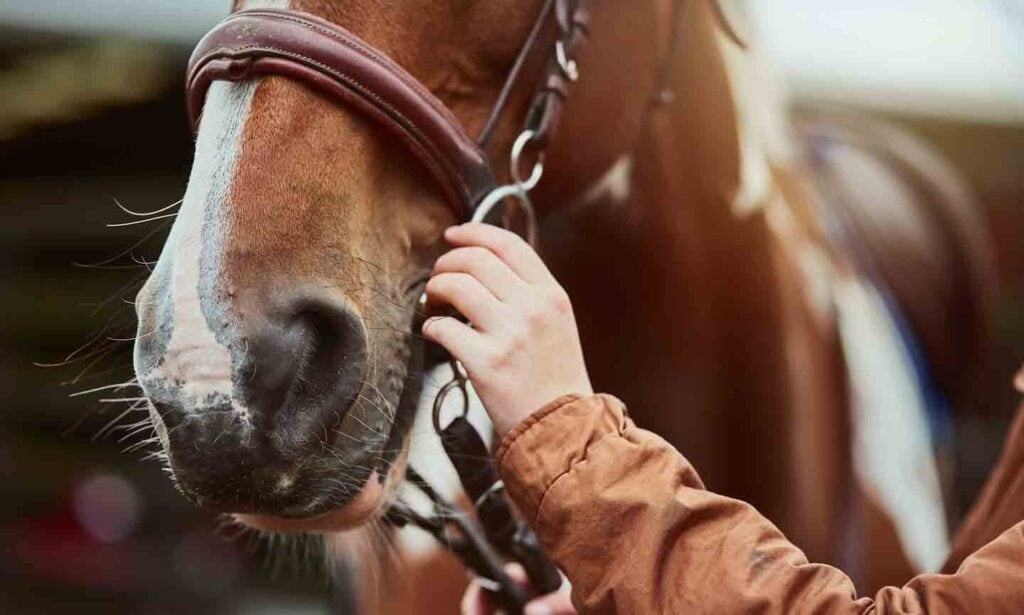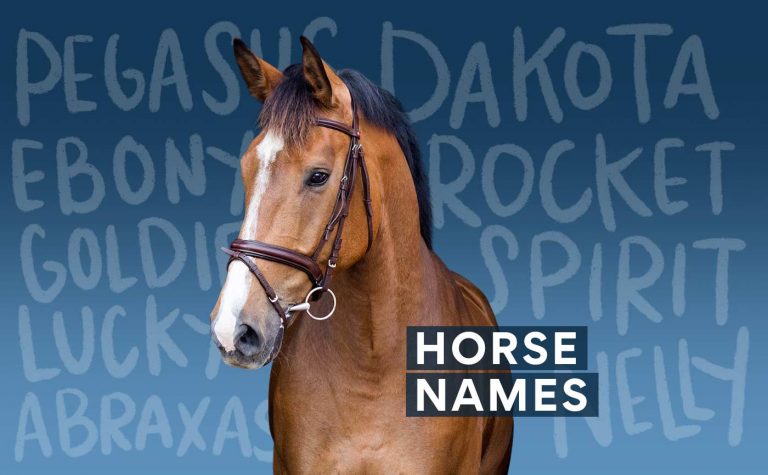To take great care of a horse, you need the right supplies, from stable cleaning products and feeding equipment to grooming tools and a first aid kit. These will help you keep your horse healthy and happy in their stall and out on the trail. But because there are so many things to consider, and so many products for horses, you might not know where to begin.
We talked to Jennifer Schott, DVM, associate veterinarian at Lineberger Veterinary Hospital in Gastonia, North Carolina, to compile this handy horse care product guide that you can use to start shopping for everything a beginner equestrian needs.
In This Guide:
Horse Supply Checklist
Feeding Equipment:
Grooming Tools:
- Curry comb
- Dandy brush
- Finishing brush
- Mane and tail brush or comb
- Face brush
- Hoof pick
- Clippers
First Aid Supplies:
- Thermometer
- Gloves
- Scissors
- Gauze
- Surgical scrub or solution like chlorhexidine or dilute betadine
- Non-adherent dressings
- Vet wrap
- Elastikon tape
- Wound spray (such as Vetericyn® or Silver Honey®)
- Poultice pads
- Standing wrap
- NSAIDs such as Banamine® or phenylbutazone (if prescribed by your veterinarian to keep on hand in case of emergencies)
Horse Tack:
Riding Supplies:
- Riding helmet
- Riding boots
- Safety vest
- Riding pants or chaps
Stable Supplies:
- Pitchfork
- Wheelbarrow
- Muck bucket
- Shovel
- Broom
Feeding Equipment
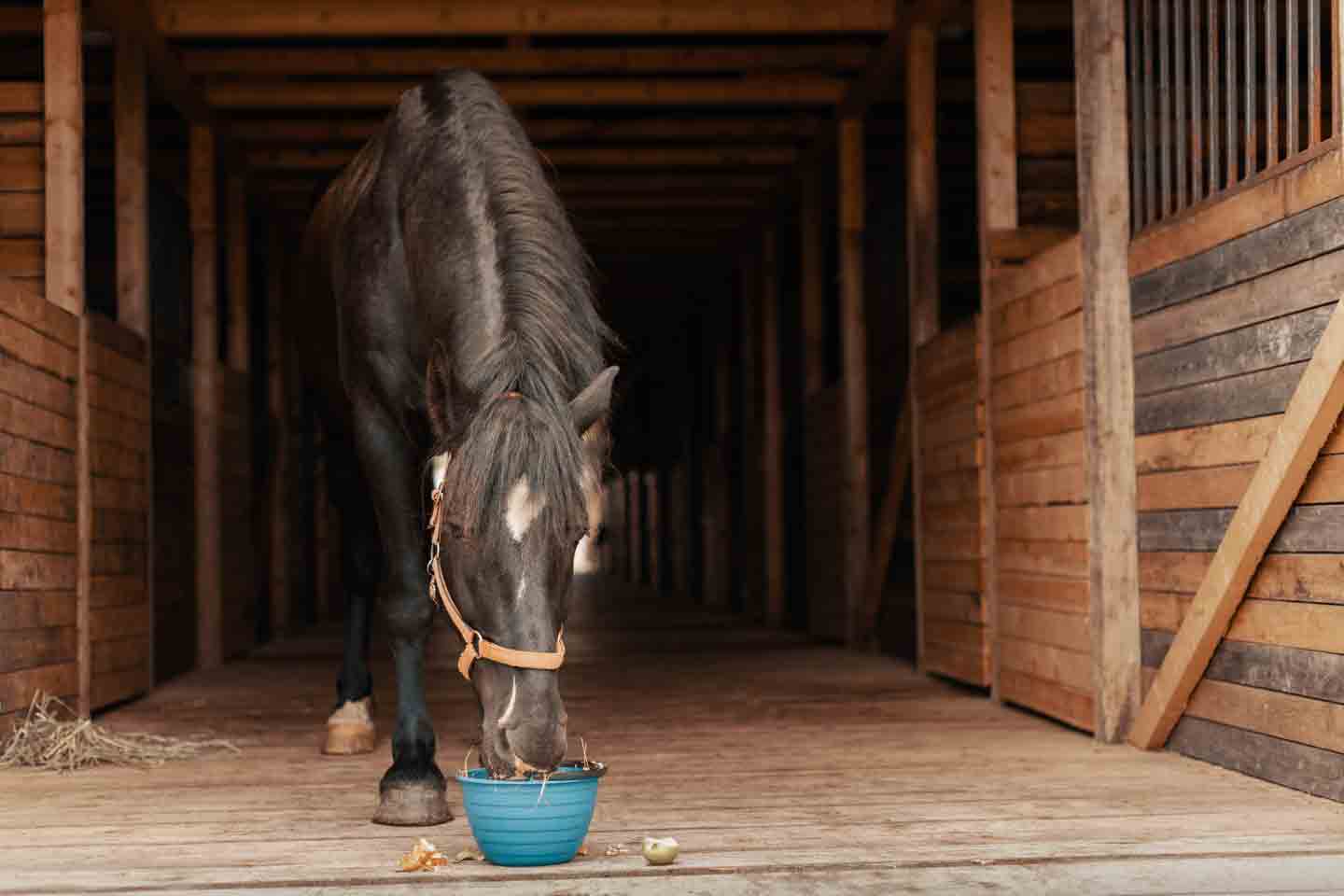
There are various types of feeders that can be used to keep your horse’s hay and grains off the ground (which helps maintain its quality and prevent contamination and pests) and easy to access.
Here are the top options to consider:
- Rubber feeder: Dr. Schott recommends soft rubber feeders, because they’re durable and safe. Buckets with hooks are a common cause for injury in stalls.
- Slow feeder: If you have a horse who eats too fast, you can slow them down with hay bags and nets and hay racks. These feeders can also help reduce waste. “A good quality hay net is worth spending a little extra on, as the less expensive ones are prone to breaking, which can lead to injuries,” says Dr. Schott. This also helps prevent horses from ingesting large amounts of dirt and sand when eating, which can lead to colic and decreased absorption of nutrients.
- Corner feeder: Dr. Schott says this type of feeder is good for horses who eat in stalls. Some are designed with multiple compartments so you can provide hay, grain, and salt.
In addition to feeders, you’ll want to consider these supplies:
- Salt block holder: Horses need salt to maintain proper electrolyte balance, support nerve and muscle function, and promote hydration. A salt block holder will make giving your horse the salt they need easy. Choose a product that will be simple to mount, sturdy, and strong enough to hold the salt blocks you use. Other options may be a salt block on a rope, or powdered or paste electrolytes if your horse doesn’t utilize a salt block.
- Feed storage: To store your horse’s feed, select a container that will effectively keep moisture and insects out.
- Waterer: There are several ways to ensure your horse drinks enough water. Options include troughs, buckets, and automatic waterers. There are also heated buckets, de-icers, and heaters to prevent the water from freezing.
Grooming Tools
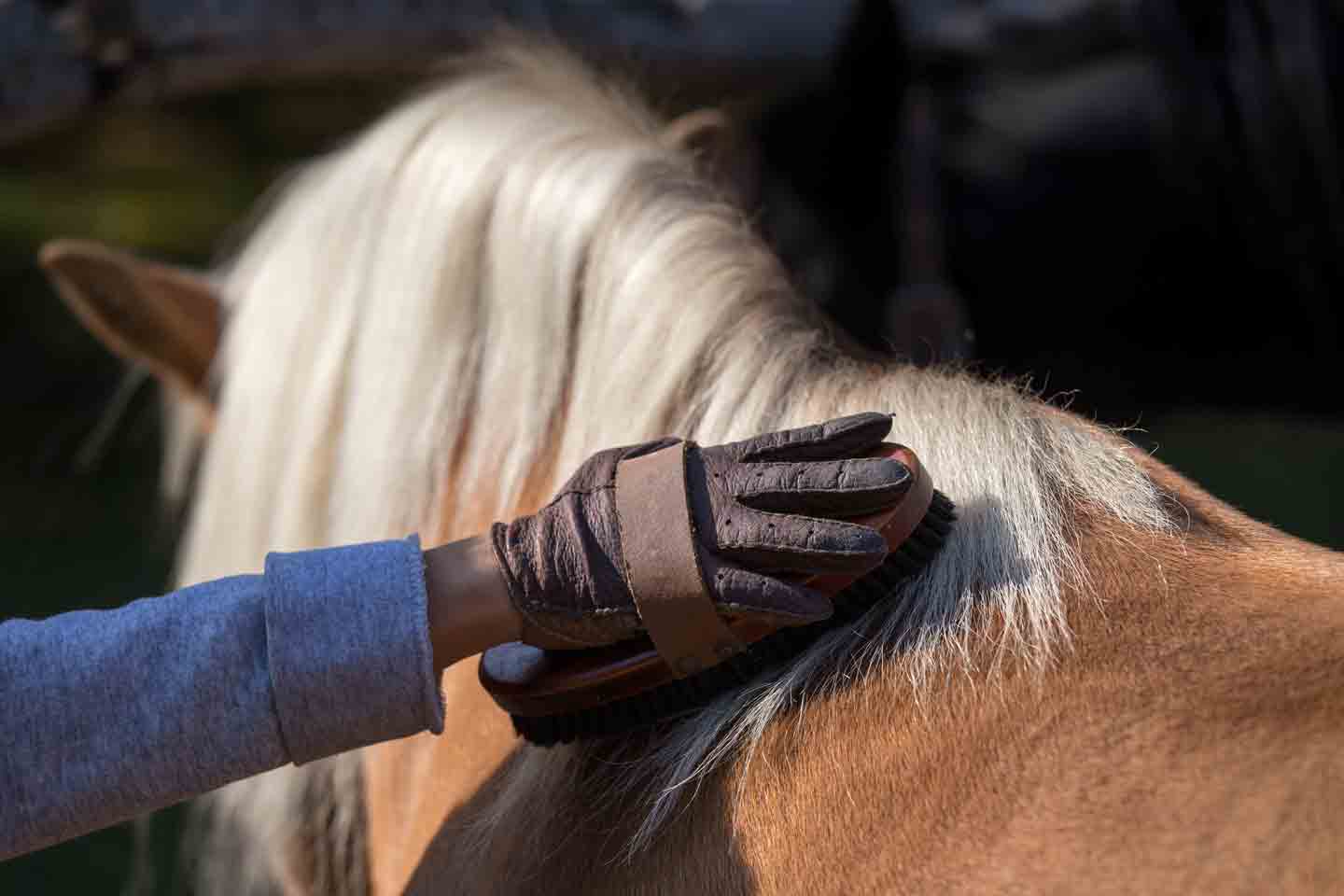
To keep your horse’s skin and coat healthy and clean, you’ll need a grooming tote (aka a bag to hold all your grooming gear) that contains various tools.
These are the grooming supplies you should have on hand:
- Curry comb: A curry comb is used to loosen debris, dander, and dirt from your horse’s whole body. Metal curry combs can make it easier to remove dried mud, while rubber curry combs can give your horse a massage while they’re being groomed. If you have trouble handling the comb, you might find that a curry mitt or glove is more comfortable.
- Dandy brush: After using a curry comb to loosen debris and hair, you can use a dandy brush, which has stiff bristles, to efficiently remove it all. However, it shouldn’t be used on sensitive areas such as the face, belly, or legs, where the skin may be more delicate or prone to irritation. If your horse is sensitive overall to stiff bristles, go with a medium-stiffness brush.
- Finishing brush: This type of brush has soft bristles and can be used to smooth the coat and make it shine. It’s also used on areas of the body that are more sensitive.
- Mane and tail brush or comb: This is a great tool to have if your horse’s mane or tail tends to get a lot of tangles. You can pair it with a detangler for horses to make the task even easier.
- Face brush: A horse’s face is quite sensitive, and this brush is designed for it. It has soft bristles that are gentle, and the smaller size makes it easy to work on grooming this area.
- Hoof pick: Hoof care is critical. This product is used to remove rocks, dirt, dry mud, manure, and other debris from the grooves and crevices of the hoof, particularly around the frog (a V-shaped structure on the underside of the hoof). Some picks have brushes on them as well to make the process easier. And after cleaning the hooves, you might opt to polish them to make them shine.
- Clippers: When you need to trim your horse’s coat, having a high-quality clipper in your kit will make it quick and easy. Select the right one based on the thickness and texture of your horse’s hair, how quiet you want it to be, and whether you want it to be cordless.
First Aid Supplies
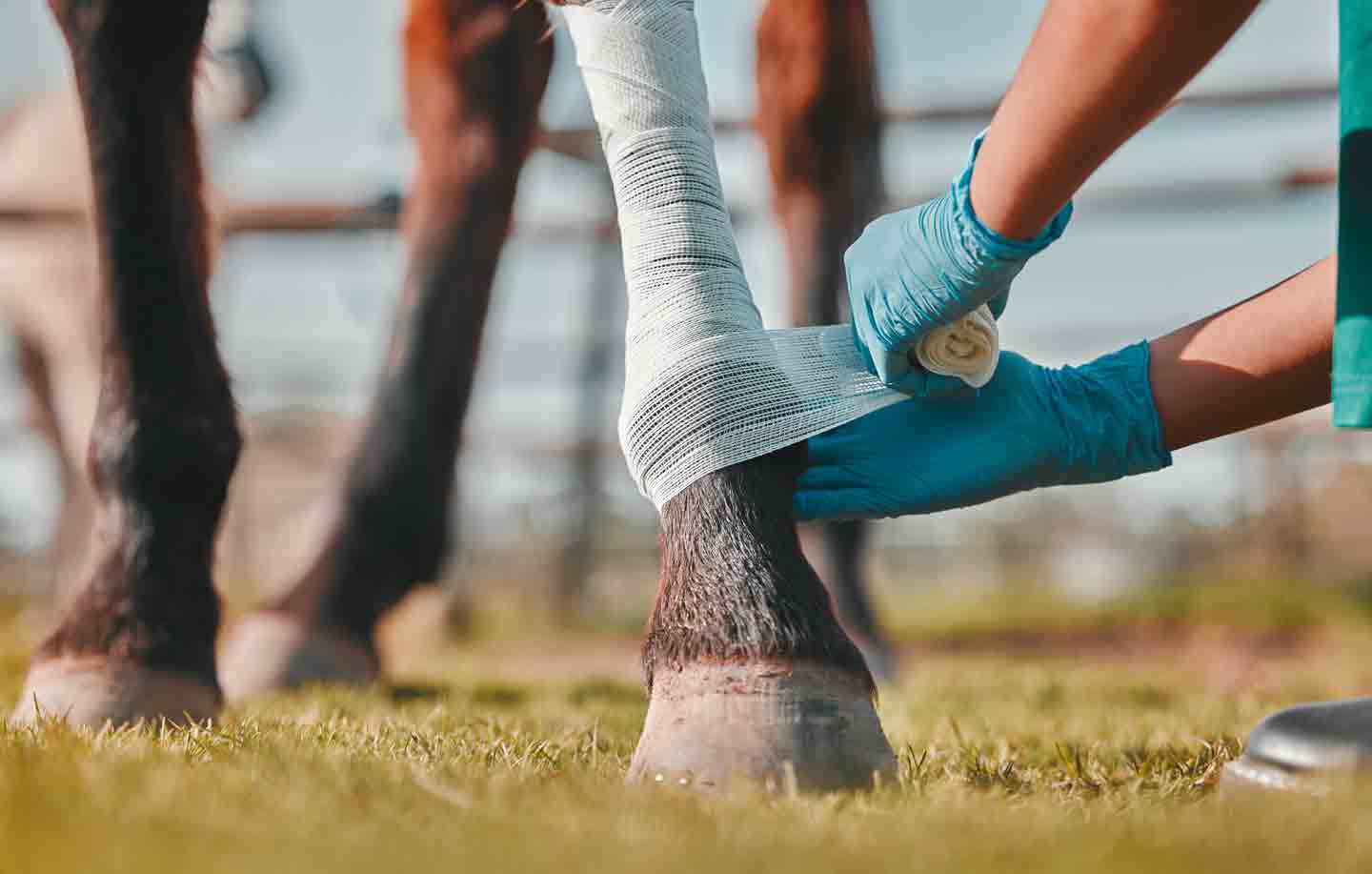
“Having a basic medical kit is a great idea,” says Dr. Schott. “A horse should always see a vet for an injury; however, if there is a long wait for the vet to get to you, these things can come in handy.”
Here are the items Dr. Schott recommends for a horse first aid kit:
- Thermometer: Checking your horse’s temperature can help you determine if there’s a problem that needs veterinary attention. Digital rectal thermometers for horses can provide fast readings. A normal temperature range for adult horses is 99-101.5 degrees Fahrenheit; for young foals this range is a bit higher, up to 102.5 degrees Fahrenheit.
- Gloves: Latex gloves are used to protect both you and your horse, so always have these available should you ever need them.
- Bandage scissors: You’ll need scissors for tasks like cutting bandages before applying them to wounds, and for removing bandages too.
- Gauze: Gauze pads and rolls can be used to clean wounds and cover them.
- Surgical scrub or solution: Have a solution for wound management. The right product will contain antiseptic ingredients designed to kill bacteria and clean the skin.
- Non-adherent dressings: These are used to cover wounds, and because they don’t have adhesive, they can be less painful when removed.
- Vet wrap: This type of bandage adheres only to itself. It has multiple uses. For example, it can hold medication and gauze against a horse’s skin with the right amount of pressure.
- Elastikon tape: This is an adhesive tape that’s used to keep bandages in place. Because of its elasticity, it can be applied to uneven parts of the body.
- Poultice pads: These make it easy to apply a poultice (a soft, moist mass of material, often containing herbs or other medicinal substances) to fight inflammation, infection, and soreness.
- Standing wrap: This type of leg wrap can be used to prevent stocking up (swelling in the legs) when a horse is in their stall or trailer. Like horse boots, it can also be used to help prevent injuries or support wound healing.
- Wound spray: Wound sprays help heal and clean abrasions, cuts and minor wounds.
Horse Tack
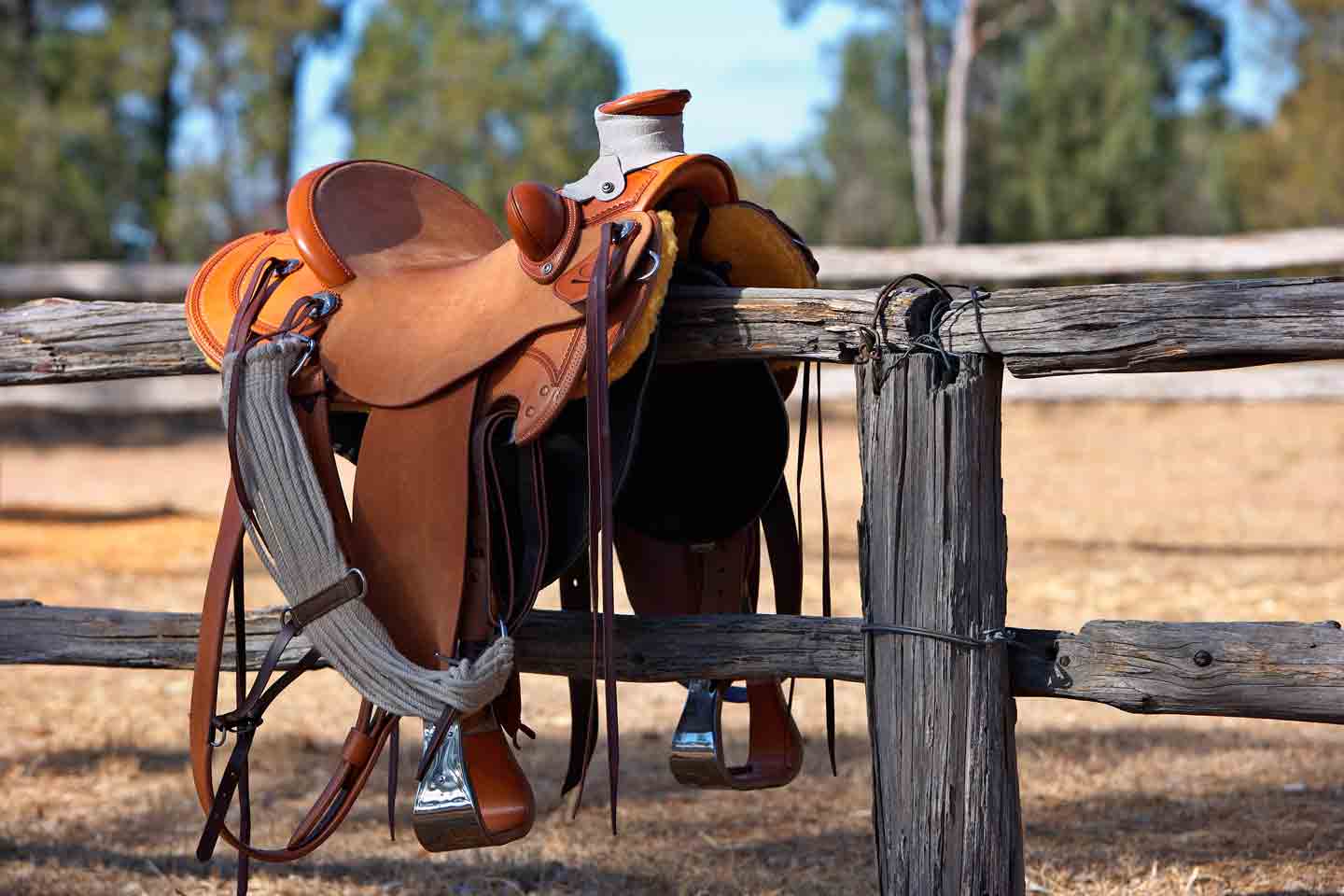
To ride a horse, you’ll need the right equipment. “The many options can be overwhelming, and every horse and rider is different. Working with a trainer or riding instructor to figure out which products work best for you and your horse is the best idea,” says Dr. Schott.
Here’s a list of the basic horse tack you’ll need:
- Bridle: This is used to direct your horse. It consists of the headpiece, browband, noseband, cheek piece, throatlatch, bit, and reins. There are different types, such as dressage, snaffle, and bitless bridles. A headstall serves the same purpose but doesn’t have a noseband.
- Saddle: The saddle is placed on your horse’s back, and it’s what you sit on, so it should be comfortable for both of you. There are English saddle and Western saddle styles, and there are saddles for different purposes, such as general purpose, racing, jumping, and dressage.
- Saddle pad: The saddle pad is placed under the saddle to protect your horse from rubbing and to keep their sweat off the saddle. It should work well with your saddle and for your riding purpose.
- Girth or cinch: This holds the saddle in position on your horse. Getting the right length is key to ensuring a secure and comfortable fit.
- Stirrups and stirrup leathers: Stirrups hang on either side of your horse and are used for mounting your horse and resting your feet while you ride. There are multiple styles and materials to choose from, but no matter what, get the right size for your feet. Stirrup leathers attach the stirrups to the saddle, so they need to be the right length for your legs as well.
- Halter and lead rope: These are for leading and tying your horse for things like grooming and transport. There are multiple options, including leather, nylon, rope, and breakaway. No matter which you choose, make sure it fits your horse comfortably.
Riding Supplies

In addition to the tack used for riding your horse, there are supplies that will keep you safe, whether you’re trail riding or competing in equestrian sports.
Here are some riding supplies that are worth checking out:
- Riding helmet: This is designed to protect your head from injury if you have an accident while riding your horse. Check a product’s safety rating and size. “Always buy a riding helmet that is ASTM/SEI certified,” advises Dr. Schott. This certification ensures the helmet meets stringent safety standards for impact resistance and retention.
- Riding boots: Horse riding boots can prevent your feet from slipping out of the stirrups. Choose a pair based on your style of riding. “There are many options, so trying on a few pairs is best,” says Dr. Schott.
- Safety vest: This covers your torso and helps protect against injuries in the event you fall off your horse. It is padded to absorb impact and distribute force, reducing the risk of serious injury. It should fit comfortably and not restrict your movement.
- Riding pants or chaps: These are designed to protect your legs from rubbing and chafing against the saddle, as well as from potential scratches or abrasions from branches or other hazards while riding. They also provide grip and stability in the saddle without restricting movement. Jodhpurs work well with short riding boots, while breeches work well with tall boots.
Stable Supplies
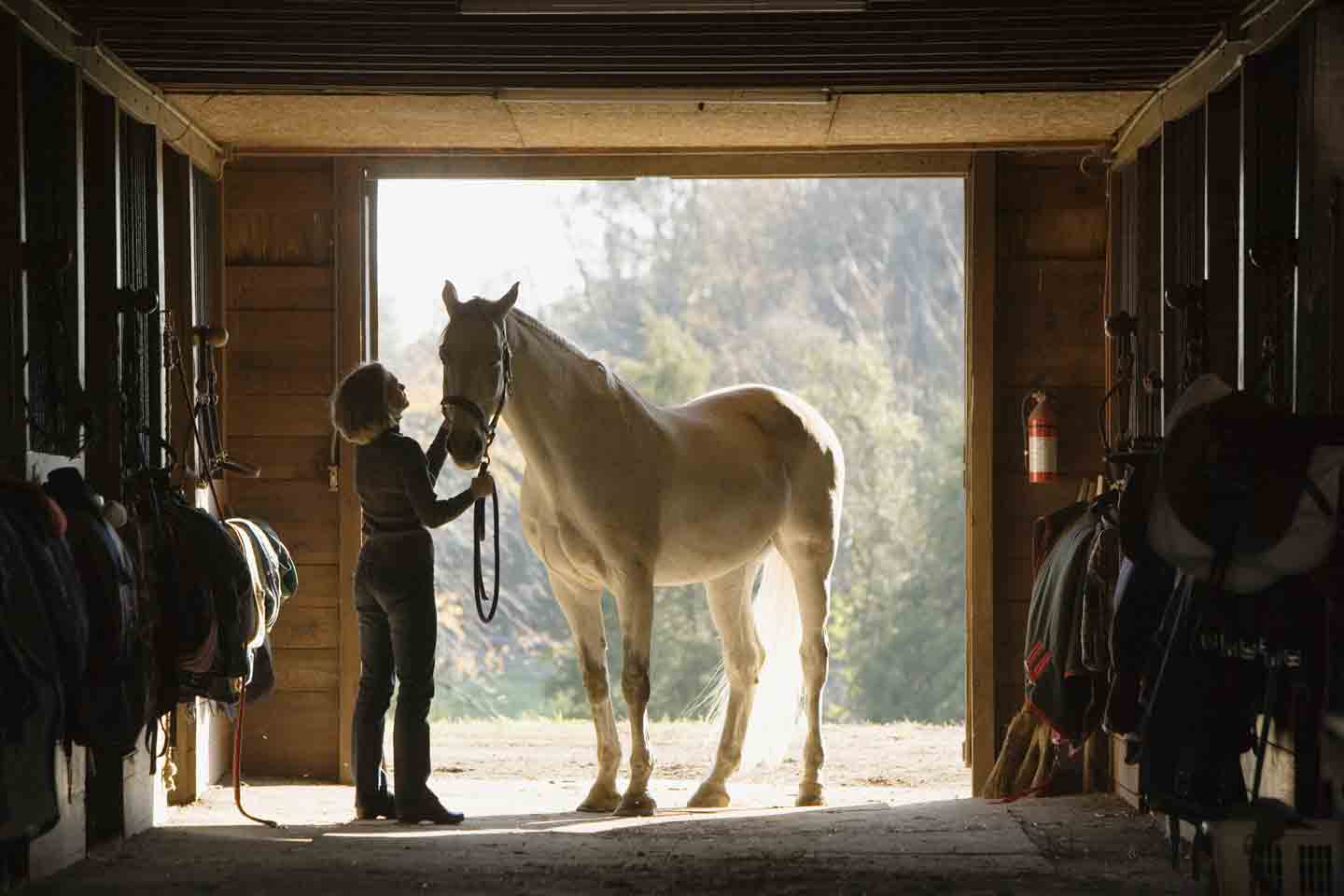
According to Dr. Schott, when it comes to stable maintenance, “There is a long list of supplies needed, and this will vary a lot depending on the horse’s housing situation.”
For general stable cleanup and maintenance, use the following products:
- Pitchfork: This is used for removing manure from your horse’s stall without wasting a lot of bedding, as shavings fall through the tines. Choose a pitchfork that has a comfortable handle and is made of lightweight yet durable materials. You can also find replacement heads.
- Shovel: This can be used for tasks like moving bedding, getting rid of waste, and removing snow. Like a pitchfork, look for a shovel that is made of durable materials and is lightweight for ease of use.
- Broom: A durable outdoor broom can quickly clean wet and dry debris on the floor of the stall. Heavier debris and large messes can be swept with a push broom.
- Wheelbarrow: This is used to collect and dump waste from your horse’s stall. It can also be used to move clean materials like bedding into the stall. Choose one that’s easy to maneuver so you can transport heavy supplies and materials with less effort.
- Muck bucket: This can be used when removing waste from the stall. Choose one that’s made of tough materials, with durable handles for lifting and carrying.
FAQs About Horse Supplies
Q:Why is it a bad idea to share grooming tools between horses?
A:For hygienic and health reasons, every horse should have their own set of grooming tools. “Bacterial skin infections like rain rot are transmissible between horses. Using your own grooming tools and sterilizing them regularly is very important,” says Dr. Schott.
Q:Can you ride a horse with no equipment?
A:Some riders can ride some horses with no equipment—but it really depends on the rider and the horse. “Some horses do well when ridden without a saddle, but some don’t like it,” says Dr. Schott. “I would never recommend riding without some sort of bridle unless the horse is specifically trained for that. I also always recommend wearing a helmet and proper riding boots for safety.”
Q:What does a horse need monthly?
A:Dr. Schott says, “Horses need their feet trimmed, and shoes replaced if they have them, every four to eight weeks.” In addition to their feed, there are supplements that can support your horse’s health, and you can discuss these with your vet if you aren’t sure what your horse needs. You can also ask your vet about dewormer frequency.
These are essential items for beginner equestrians, but there are many other products that can ensure your horse’s comfort in various conditions. For example, there are fly control and repellent products like fly boots, fly masks, fly sheets, and fly sprays. And to keep your horse dry or warm, there are turnout sheets and horse blankets. You can even buy your horse toys. As you get to know your horse, you’ll add items to your wish list and expand your supply kit to meet their needs throughout the changing seasons of the year.
Expert input provided by Jennifer Schott, DVM, associate veterinarian at Lineberger Veterinary Hospital in Gastonia, North Carolina.
This content was medically reviewed by Chewy vets.
More Tips for Equestrians
Share:
